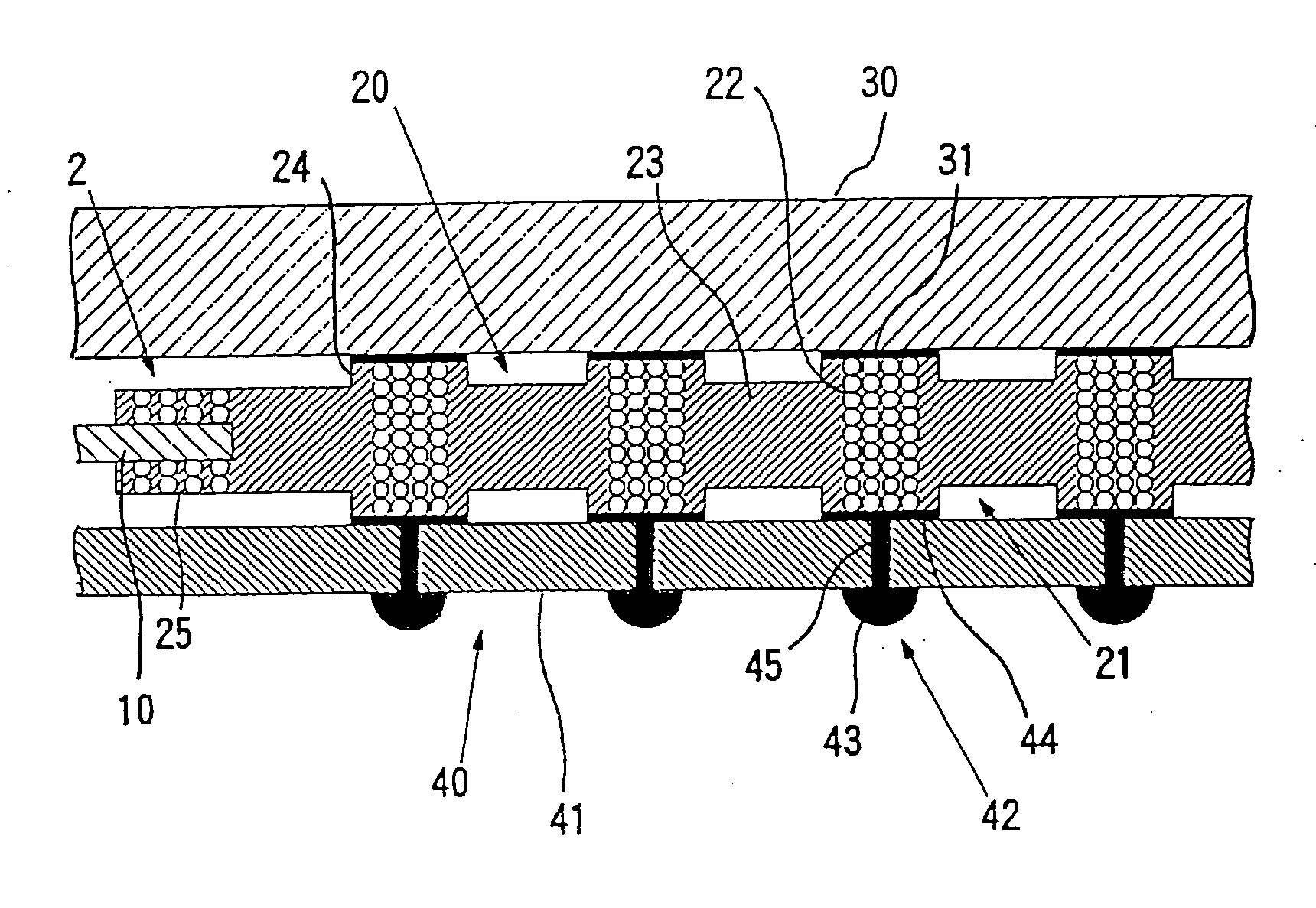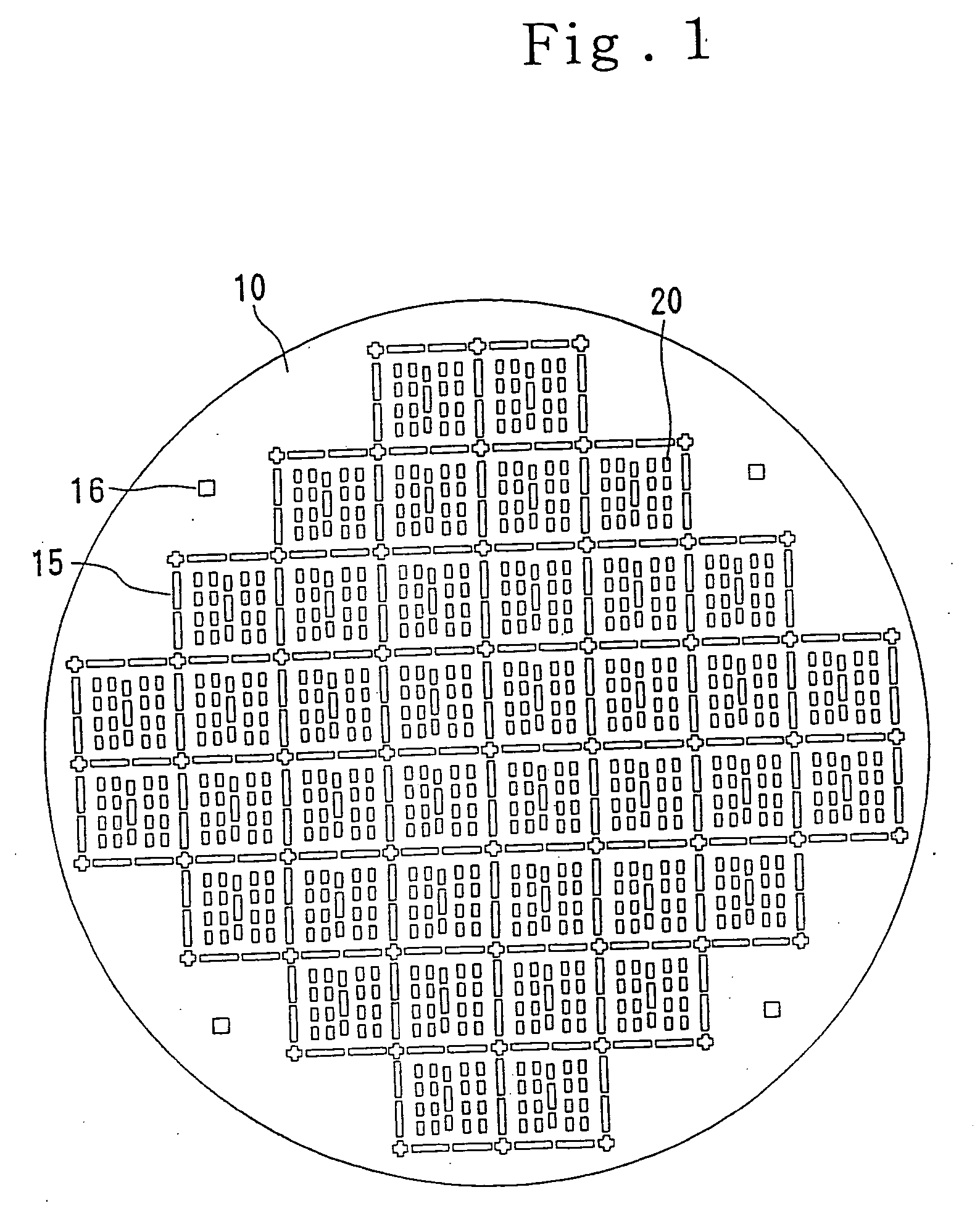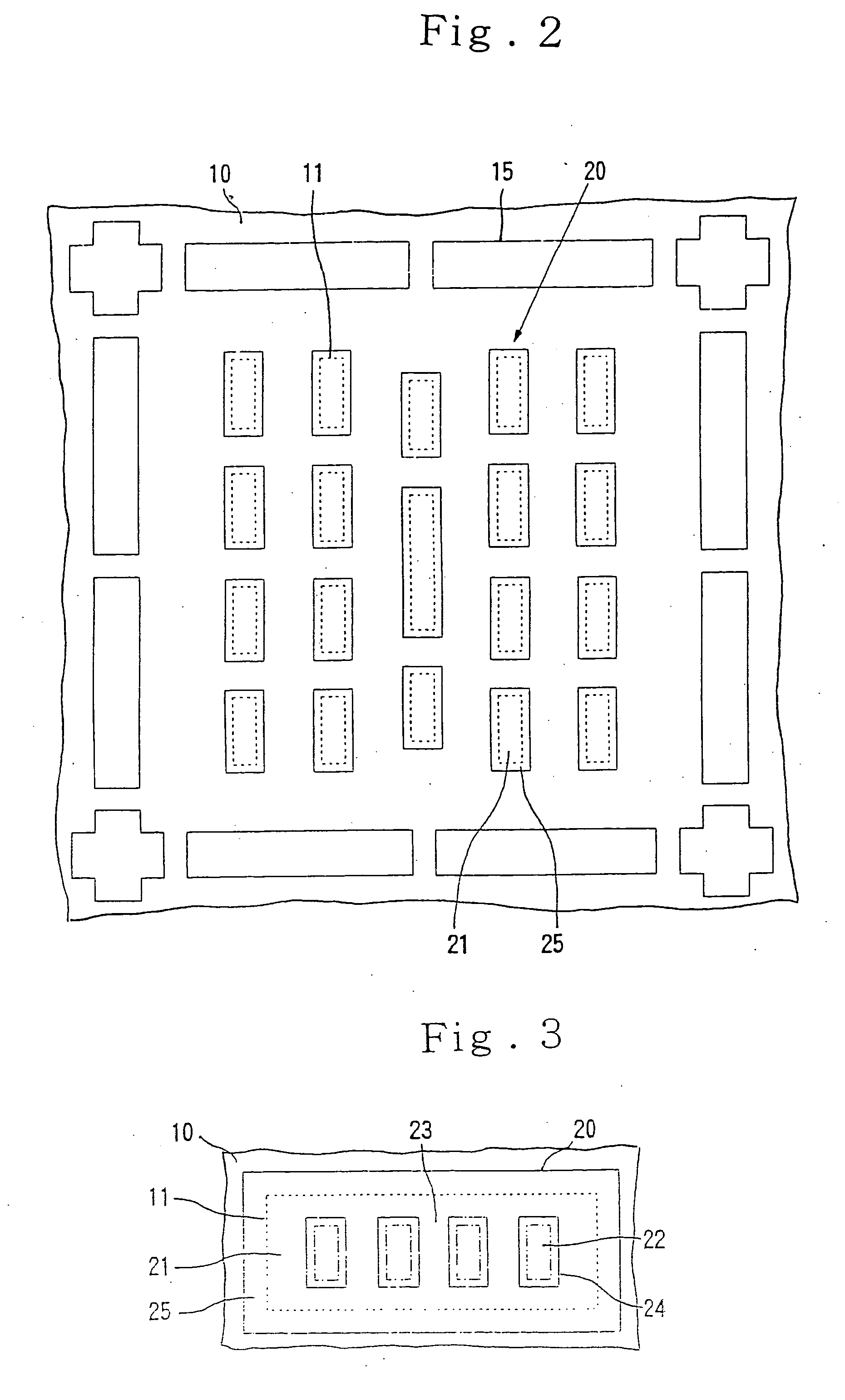However, the anisotropically conductive
elastomer sheet is flexible and easy to be deformed, and so it is low in handling property.
Therefore, the positioning and the holding and fixing of the uneven distribution type anisotropically conductive
elastomer sheet are going to be difficult upon its
electrical connection to electrodes to be inspected of the object for inspection.
In the burn-in test, there is a problem that even when the necessary positioning, and holding and fixing of the uneven distribution type anisotropically conductive
elastomer sheet to an
integrated circuit device has been realized once, positional deviation between conductive parts of the uneven distribution type anisotropically conductive elastomer sheet and electrodes to be inspected of the
integrated circuit device occurs when they are subjected to
thermal hysteresis by temperature change, since coefficient of
thermal expansion is greatly different between a material (for example,
silicon) making up the integrated circuit device as the object for inspection and a material (for example,
silicone rubber) making up the uneven distribution type anisotropically conductive elastomer sheet, so that the state of
electrical connection is changed, and the stable connection state is not retained.
In the burn-in test on the other hand, it takes a long time to individually conduct electrical inspection of a great number of integrated circuit devices because each integrated circuit device that is an object for inspection is minute, and its handling is inconvenient, whereby inspection cost becomes considerably high.
However, it has been found that when a wafer as an object for inspection is of
large size of, for example, at least 8 inches in
diameter, and the number of electrodes to be inspected formed thereon is, for example, at least 5,000, particularly at least 10,000, it is difficult to apply the above-described anisotropically conductive connector as a probe member for the probe test or WLBI test for the following reasons because a
pitch between electrodes to be inspected in each integrated circuit is extremely small.
However, the content of the conductive particles in any other conductive part, for example, the conductive part formed at the conductive part-forming portion X becomes too low, so that good
conductivity cannot be achieved at such conductive parts.
However, such an anisotropically conductive elastomer sheet is large in the whole area but each conductive part is minute, and the area proportion of the surfaces of the conductive parts to the whole surface of the anisotropically conductive elastomer sheet is low.
It is therefore extremely difficult to surely produce such an anisotropically conductive elastomer sheet.
As a result, the production cost of the anisotropically conductive elastomer sheet is increased, and in turn, the inspection cost is increased.
When a great difference is created in the absolute quantity of
thermal expansion in a plane direction as described above between the wafer and the anisotropically conductive elastomer sheet, it is extremely difficult to prevent positional deviation between electrodes to be inspected in the wafer and the conductive parts in the anisotropically conductive elastomer sheet upon the WLBI test even when the
peripheral edge about the anisotropically conductive elastomer sheet is fixed by a frame plate having Δ coefficient of linear
thermal expansion equivalent to that of the wafer.
However, in the means that the
peripheral portions about the anisotropically conductive elastomer sheet are mechanically fixed by the screws or the like, it is extremely difficult to prevent positional deviation between electrodes to be inspected in the wafer and the conductive parts in the anisotropically conductive elastomer sheet for the same reasons of the means of being fixed by the frame plate as described above.
However, since the anisotropically conductive elastomer sheet used in the WLBI test is small in the arrangement
pitch of the conductive parts, and a clearance between adjacent conductive parts is small, it is extremely difficult in fact to do so.
In the means of being fixed with the
adhesive also, it is impossible to replace only the anisotropically conductive elastomer sheet by a new one when the anisotropically conductive elastomer sheet suffers from trouble, and so it is necessary to replace the whole probe member including the circuit board for inspection.
As a result, increase in inspection cost is incurred.
Therefore, a large-sized pressing mechanism is required, so that the inspection apparatus as a whole becomes considerably large.
Further, in the case a large-area wafer having a
diameter of 8 inches or greater is inspected, scattering of loads applied to individual electrodes to be inspected occurs because difficulty is encountered on application of a load evenly to the whole wafer, so that it is difficult to achieve stable
electrical connection to all the electrodes to be inspected.
However, the pressing means by such pressure reducing
system involves a problem that when air remains between an anisotropically conductive elastomer sheet in the probe member and a circuit board for inspection at the time the air within the chamber has been evacuated, both anisotropically conductive elastomer sheet and circuit board for inspection do not fully come into
close contact with each other, so that stable electrical connection is not achieved.
 Login to View More
Login to View More  Login to View More
Login to View More 


